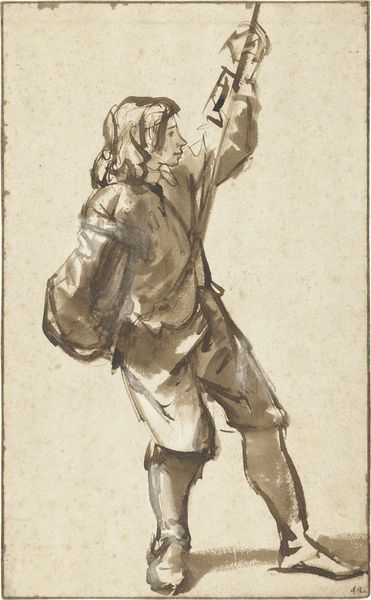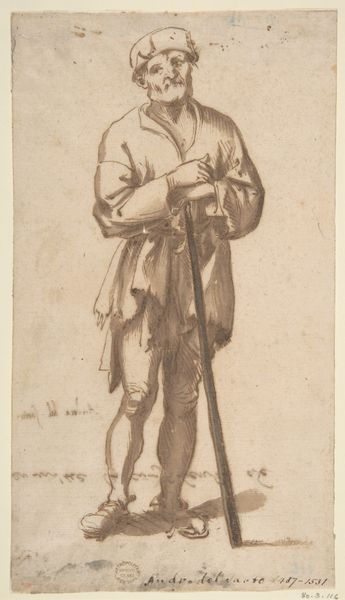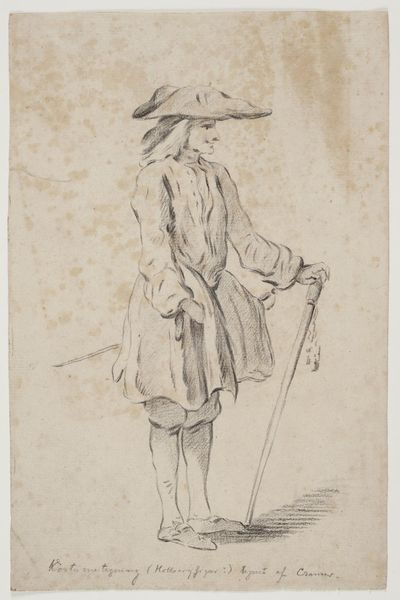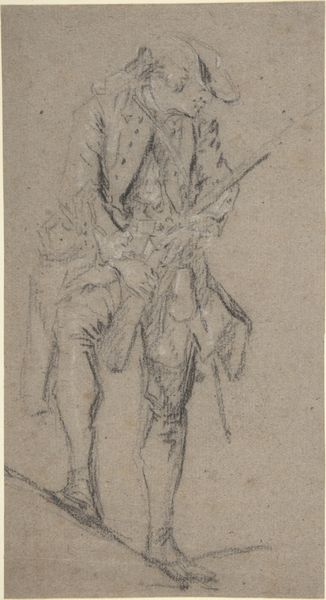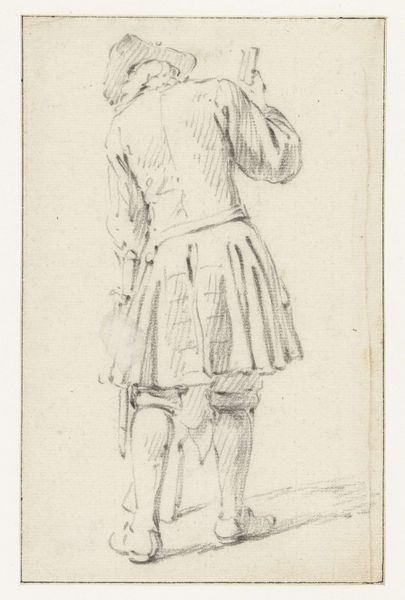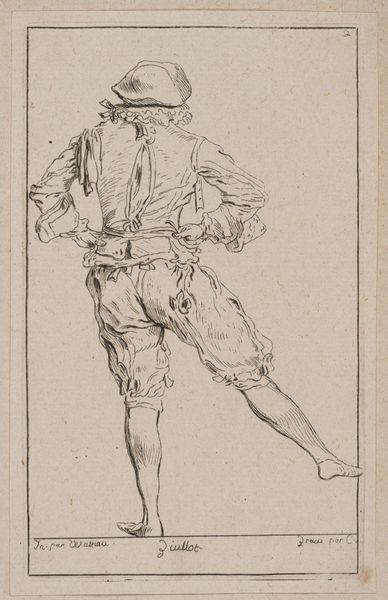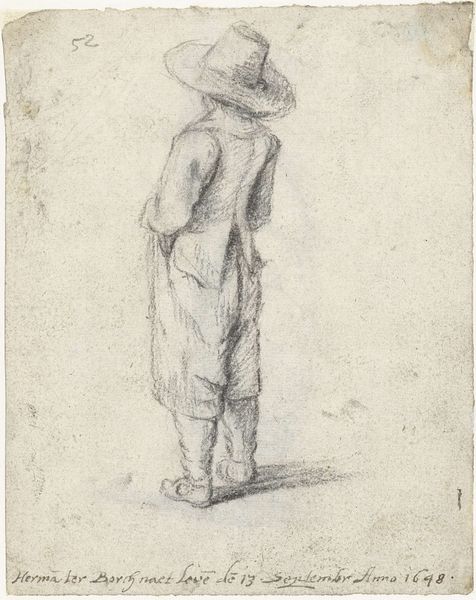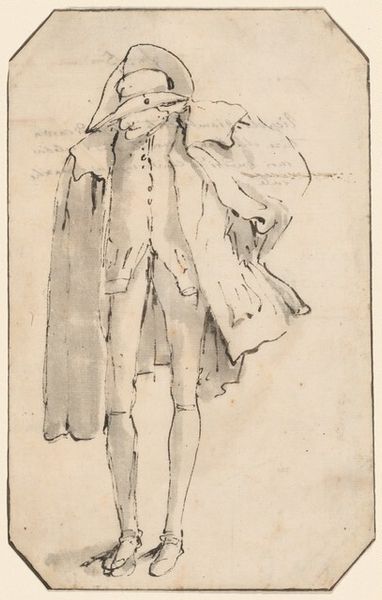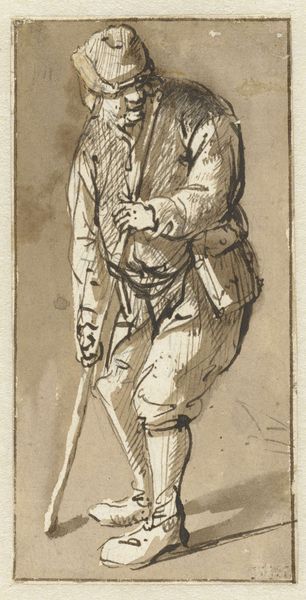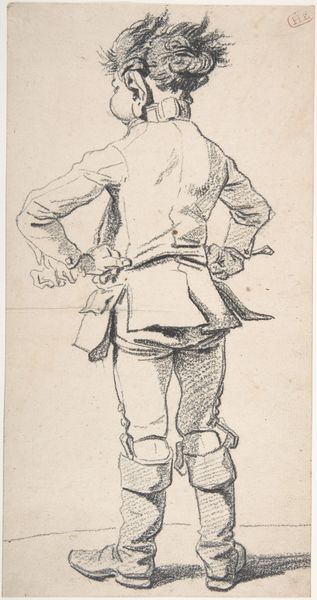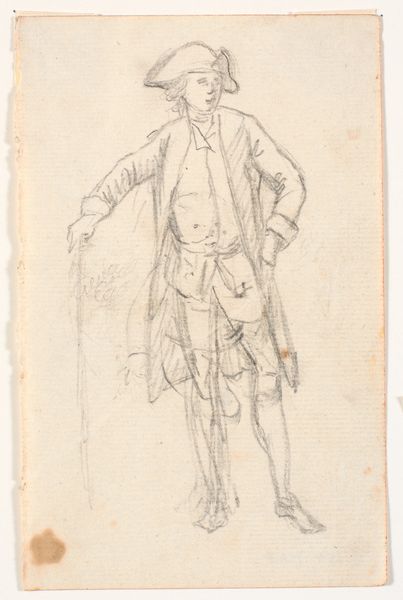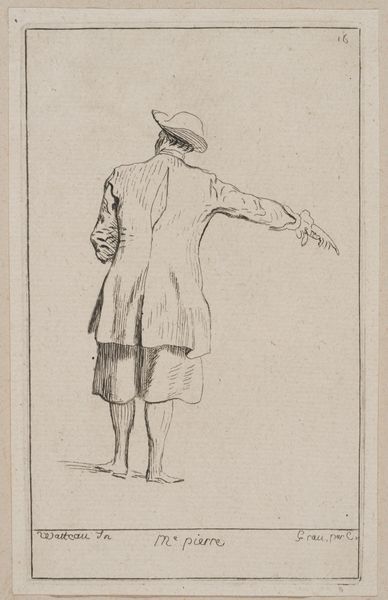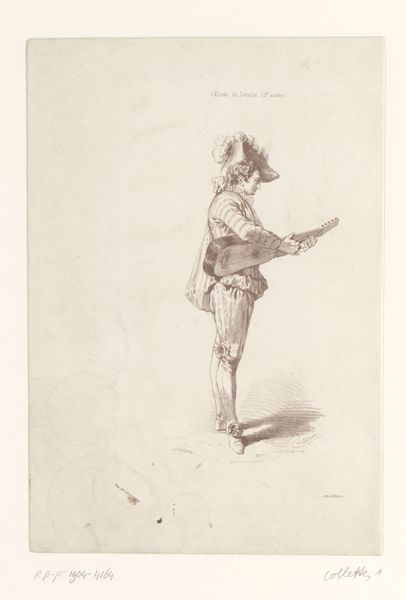
drawing, paper, ink
#
portrait
#
drawing
#
baroque
#
figuration
#
paper
#
ink
Dimensions: height 214 mm, width 140 mm
Copyright: Rijks Museum: Open Domain
Editor: Here we have Charles Parrocel's "Standing Ensign," a drawing in ink on paper dating from about 1735 to 1745, currently held at the Rijksmuseum. The thing that immediately grabs me is how confident this figure looks, almost nonchalant, despite being in full armor. What do you make of that contrast? Curator: It’s a fascinating tension, isn't it? The figure’s casual pose contradicts the heavy symbolism associated with a standard-bearer, especially in the context of the 18th century. How do you think Parrocel is positioning this figure in relation to the growing professionalization of military service? Editor: That’s a great point. I guess I hadn't really considered how the public’s view of soldiers was changing during that time. Was Parrocel commenting on the evolving role of the military in society? Curator: Precisely! Drawings like these, often commissioned or created for print publication, served to construct a certain image of military valor and identity for public consumption. They project power and authority, while perhaps subtly nodding towards the changing social fabric. What do you observe about his stance, his clothing details, and what is Parrocel saying about that social identity, if anything? Editor: Well, he's leaning slightly, with his hand on his hip, like it’s just another day. And his uniform is elaborate, maybe a bit theatrical? Curator: Exactly! The emphasis is not on grim determination but, shall we say, aristocratic flair. Consider, also, that such figures often become emblematic, especially if their images get reproduced in pamphlets or books. The meaning is, therefore, partly in circulation. It is in the context of the Dutch Republic's history and collective consciousness. Editor: So it's not just a portrait, but a piece of social commentary. Curator: Precisely! By examining its socio-historical function and its influence on our ideas of militaristic pomp, we enrich the work beyond just one soldier's armor! It opens the door for us to reflect how images are constructed for our cultural consumption and what those ideas were doing.
Comments
No comments
Be the first to comment and join the conversation on the ultimate creative platform.
